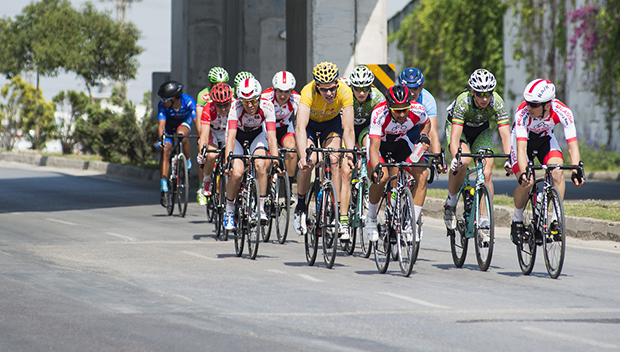
One of the most splendid attractions of road cycling is the feel of rolling down the road in a big collective pack. We at AthletiCamps are frequently asked whether our athletes should join a specific group ride or not. The fact that athletes ask this question indicates they are trying to understand the role group rides play in their overall training program, and this is a great issue to ponder.
Group Ride Anatomy
A typical group ride can consist of any number of riders (I've been on some as small as three and as large as 150!), and usually lasts between two and four hours. The three factors determining the type of ride you have are: the experience level of the riders, the geography of your area and how many rest stops there will be along the route. These factors can combine to create remarkably different rides.
While the terrain and duration may differ, one thing that's almost universal across all group rides is the psychological factor. Namely, there's always someone in the group who is feeling frisky or is just more aggressive (or in better shape), and will attack the group at one or more points in the ride. Of course, when one attacks, the whole group will try to follow. It is this final reality of attempting to match the accelerations of a group which can determine whether a group ride will be helpful to your training.
It's important to distinguish between two types of group rides. One type I'll call a group training ride—where the riders have some type of coordination and are working on specific goals together; e.g., a ride your race team might put together. These training rides that have a specific goal are usually quite beneficial.
The other type is the much more common club ride, which is the focus of this article. In the club ride, it is usually not known who and how many riders will show up on any given day, and this creates a randomness and lack of focus that can be a challenge.
Races vs. Club Rides
First and foremost, it's important to understand that group rides are not races. There are no official categories. You can have many different levels—from professionals to Cat 5s—as well as a wide range of ages all riding together. Commonly, lower-level riders get pushed to their limits early in the ride and then are dropped from the group.
Opportunities
Club rides do offer lower category and masters racers an opportunity to see firsthand how a top-level cyclist performs on the bike and gives them a chance to learn from more experienced/stronger riders. It can also give you a direct experience with top-level riders that cannot be gotten merely from watching them race.
Harder is Not Better
When training for peak performances during the racing season, athletes must have a balanced program and specific plans to improve and achieve their goals. One of the most important ingredients in your program should be working on improving your aerobic capacity, which is your ability to process oxygen and thus produce more wattage at threshold.
This process requires an immense amount of work, dedication and time, and is done largely at a medium level of exertion. Doing too many club rides can take away from working on this all-important ingredient, because club ride pace is generally either too easy or too hard (and usually both during the course of a given ride). This extreme aspect of group rides can interfere with you doing the medium endurance work that is so critical towards developing your aerobic capacity.
MORE: 6 Basic Skills for Group Rides


